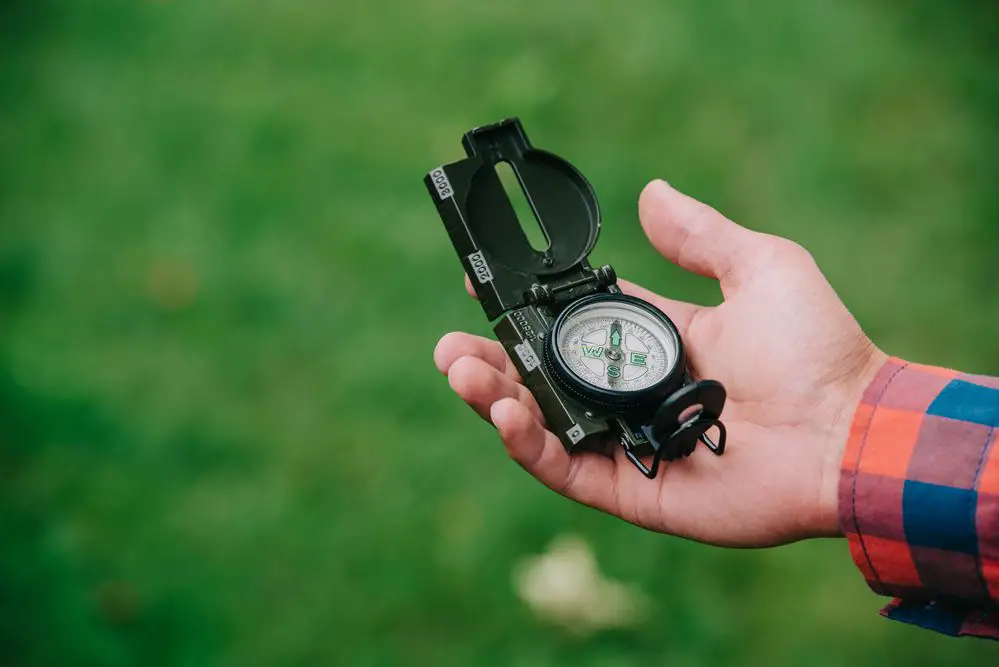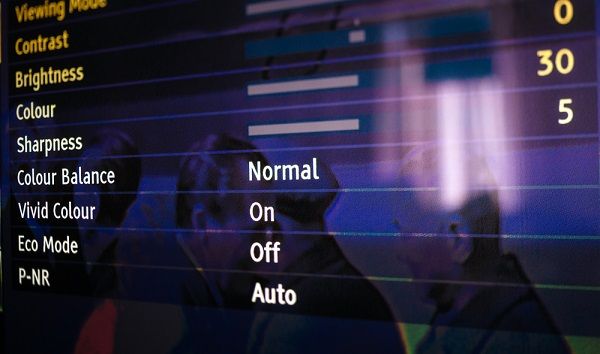
*As an Amazon Associate we may earn from qualifying purchases when you buy through links on our site.
So your HDTV antenna has arrived and you’ve spotted the ideal place for it on your roof. But how and where do you aim the thing?
Trust me, it’s actually not complicated. It’ll just depend on where your home is located and which local channels you’re looking to receive.
Read on to find out how to correctly orient your outdoor antenna to get the most from it and start watching CBS, NBC, ABC, Fox, and more for free!
Which Part is the Front?
This is a very simple question and yet many aren’t certain what they’re looking at when they view a photo of an outdoor TV antenna.
So even if you know the direction to point it, you may not know how to aim it.
For unidirectional antennas, it’s relatively easy to tell where the narrow end is located. Below, the front section of the Vansky HDTV antenna is comprised of small UHF dipoles.
The back part is the reflector and wing-like VHF dipole element.

For a more complex multidirectional TV antenna, however, it can be harder to determine where to aim it for maximum reception.
In the Channel Master CM-4228HD below, the “front” is the side with the X-shaped elements.

Determine the Best Choice for Your Home
The ability to receive the maximum number of free channels you can get will depend on where the broadcast towers are located in relation to your home.
If the broadcast towers are close to your home (within 15 miles), you may already know their direction and they’re probably hard to miss.
If a transmitter is at a greater distance, you’re going to need to search for its location. You can take a clue from examining any other TV antennas in the neighborhood to see the direction they face.
You should, however, back up your guess with some real information.
If you’re not certain where the broadcast towers are in your area, TVFool.com is an excellent resource.
By simply entering your address in the website, you’ll receive a local signal report that allows you to see the channels you’ll likely pick up, and from which direction they’re being broadcast.
This way, you have all the information needed to determine the direction to aim the antenna.
Where to Position Your TV Antenna
While 10- to 20-feet high for an outdoor TV antenna is generally considered optimal, the more specific answer is that the TV antenna should be taller than the tallest obstacle in the line of sight to transmission towers.
To make the most of the information provided to you by TVFool, you’ll need to use the direction provided by a compass or a compass app on your smartphone.
(In case it’s been a long time since middle school, keep in mind that north is 0°, east is 90°, south is 180°, and west is 270°.)
It’s Easier with Two
It’ll help to have someone assist you on the ground to report the quality of reception with each change you make to the antenna.
Consider communicating via a live video messaging app such as FaceTime, with one person on the roof with the antenna and compass, and the other person below near the TV doing the channel search.
The technically minded may consider getting a a low-cost TV antenna signal strength meter to test the coaxial line and measure reception.
The rest of us, however, prefer to simply use the channel strength meter shown on the antenna settings page of our TV. You can get to this page by pressing the Home or Menu button on your remote.

Lastly, don’t forget it’s critical that the TV antenna mast should be perfectly vertical.
Use a carpenter’s level tool to check whether you’re mounting it straight and vertical: deviation from perfectly vertical from top to bottom will likely cause you to get poorer reception.
Understand How Interference Can Affect the Signal
While your goal is to create an unbroken line of sight between your antenna and broadcast towers, there are things in and near your location that could affect reception of signal.
Metal is a notorious signal disruptor, so if your antenna is located on your roof and your chimney is metal, you may need to choose a site away from the chimney or any other metal on your roof, such as roof flashing or solar panels.
Other sources of interference may include hills, tall buildings, reflective surfaces, streetlamps, trees, and neighbors’ homes.
In some cases, weather can affect the performance of signal you receive, so you may wish to schedule your work for a clear day.
Homes located on low ground or in valleys may need to raise the height of the outdoor antenna to create a better line of sight.
In cases where your home and the addition of a mast still isn’t enough to attain a clear line of site (like if there are buildings in the way), you may need to search how to strengthen your TV signal with a booster or amplifier.
When testing for signal strength, keep in mind that people standing near the antenna can cause interference.
For indoor antennas, other electronics can be a source of interference for signals, so be sure you’re siting the antenna away from televisions, computers, game consoles, appliances and other electromagnetic sources.
In fact, locating an indoor antenna correctly and away from sources of interference can actually be a more complicated task than to position and aim it when it’s on your roof.
If you’re having little success, try relocating the antenna to eliminate interference and get more channels.
Once your antenna is properly sited and aimed, it’s important that you reinforce it against anything that could cause it to move. Indoors, this means children, pets and guests.
Outdoors, this means weather and physical barriers such as tree branches. Check the antenna regularly and replace any rusted or eroded parts before they begin to affect the unit’s orientation and performance.
Be Patient: It’ll Be Worth the Wait!
If it seems like a rather fiddly process, it is.
With some trial-and-error and practice, however, you’ll be able to optimize your antenna’s orientation and receive the channels you want, and see the day when you reap financial savings from the cable company.
